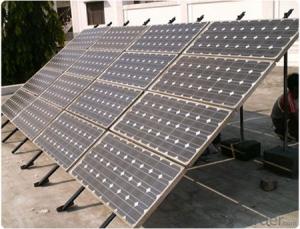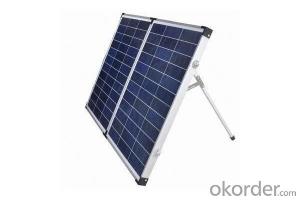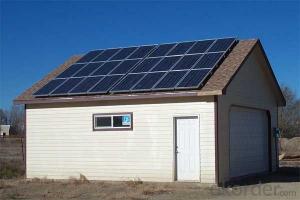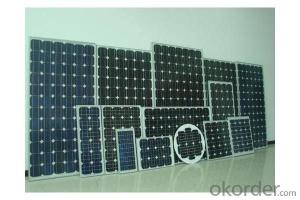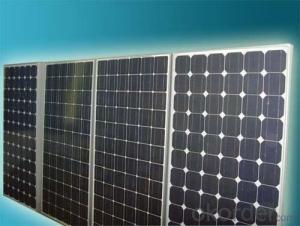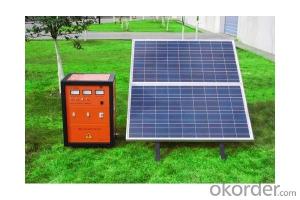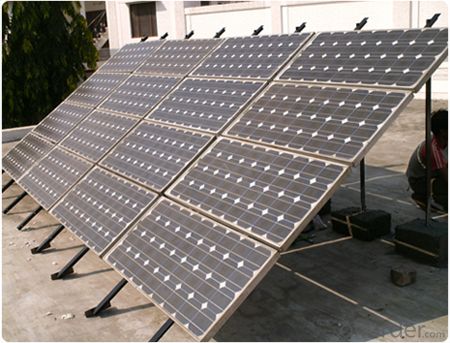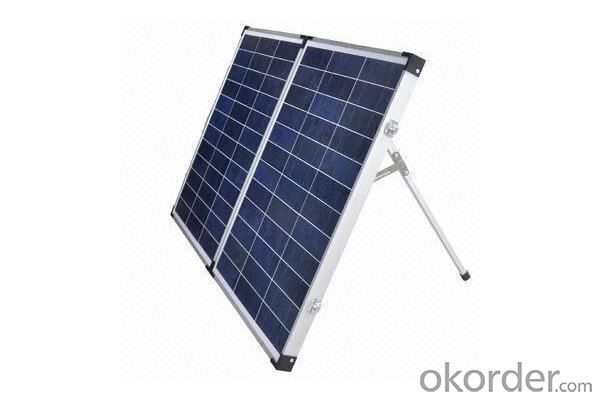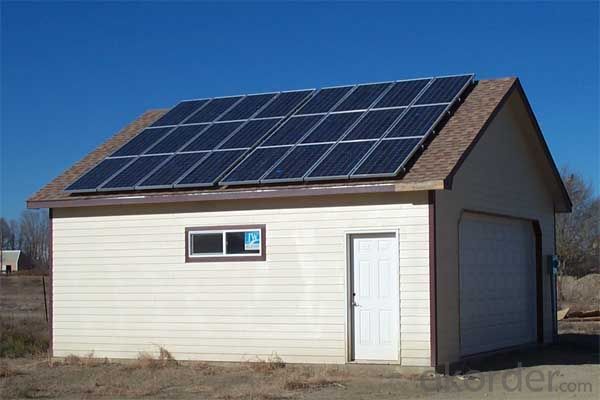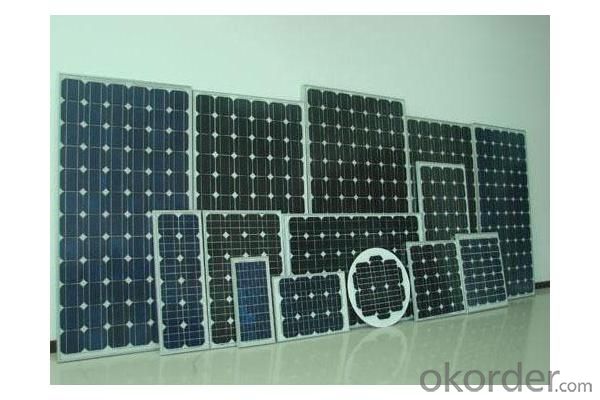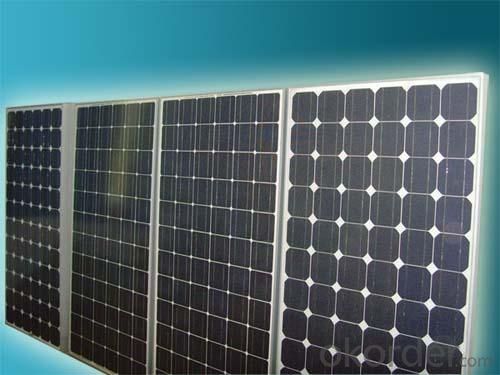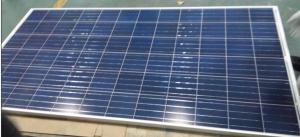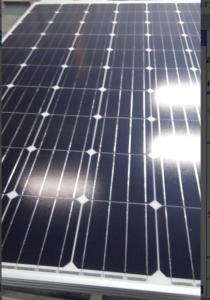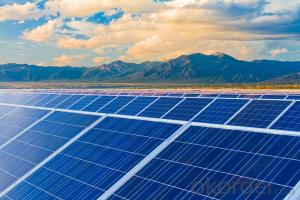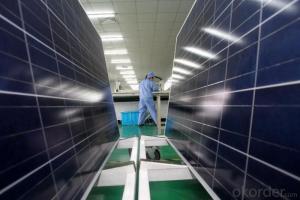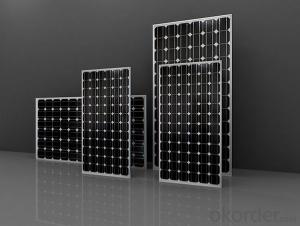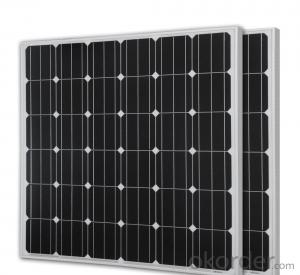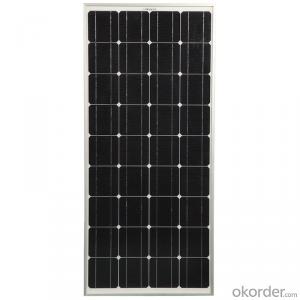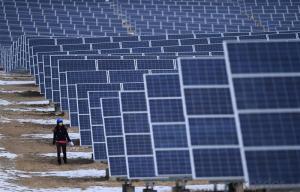Big Solar Panels 285W CE/IEC/TUV/UL Certificate Mono and Poly 5W to 320W Solar Panel
- Loading Port:
- China main port
- Payment Terms:
- TT OR LC
- Min Order Qty:
- 1000 watt
- Supply Capability:
- 100000 watt/month
OKorder Service Pledge
OKorder Financial Service
You Might Also Like
Solar Module is the core part of solar PV power systems, also is the highest value part of it. The function of Solar Module is to convert the sun's radiation to electrical energy, or transfer it to battery and store in it, or to drive the load running.
Features
Our biggest manufacturer in china, they have stable prime quality, which ensure us to produce prime quality cells, each single cell is under inspection before packing;
Our solar panel production line is also full automated, we imported equipments from spain and japan;
We provide 15years warranty, and 25years working life;
We have full set quality certificates, product meets quality requirement of USA, Europe, Australia, UK etc ;
70% of our product exported to Europe, without quality claims up to now;
So we guarantee each piece of our panel has perfect appearance, positive power performance, and without quality hidden trouble.
Images
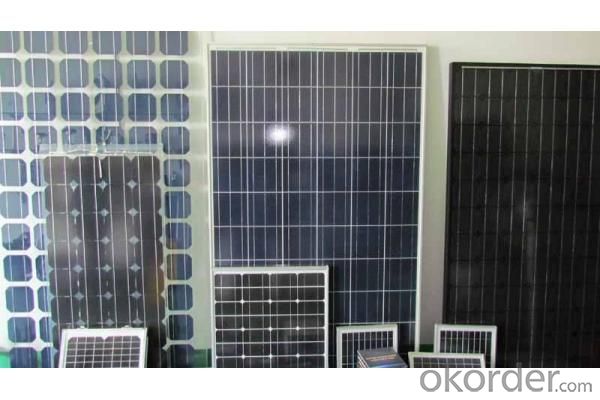
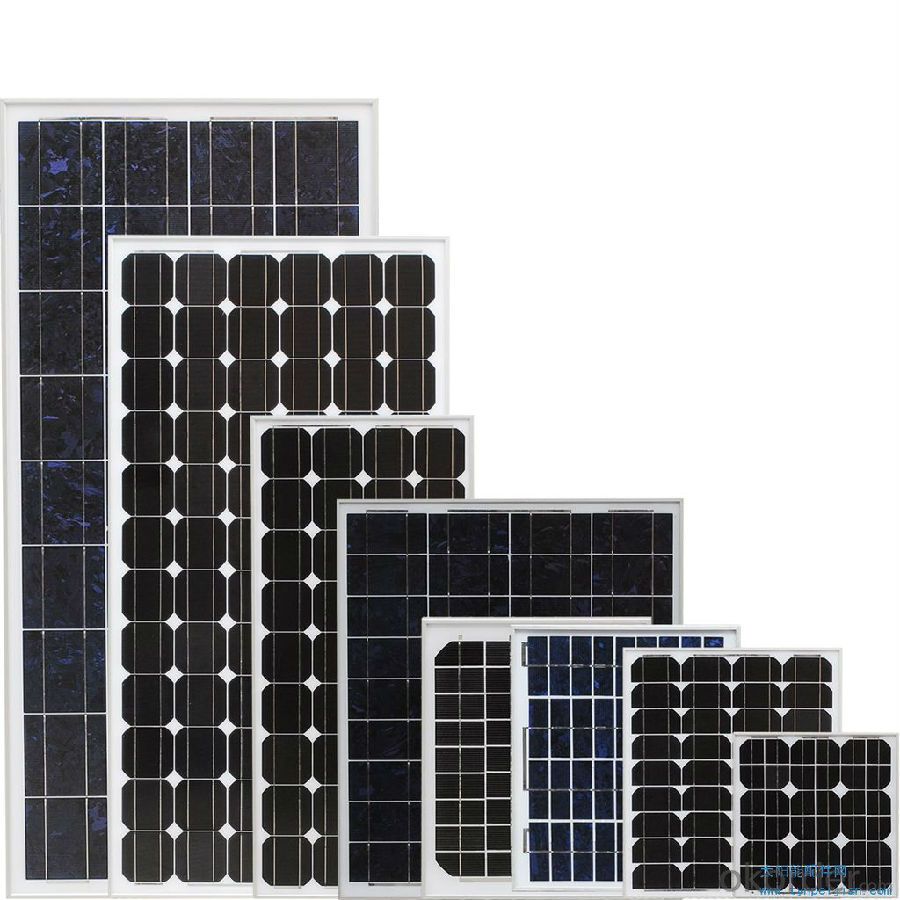
Specification
ITEM NO.: | Poly 156*156 cell , 60pcs . Power range from 230Wp-260Wp | ||||||
Maximum Power(W) | 230 | 235 | 240 | 245 | 250 | 255 | 260 |
Optimum Power Voltage(Vmp) | 29.4 | 29.5 | 29.7 | 30.1 | 30.3 | 30.5 | 30.7 |
Optimum Operatige Current(Imp) | 7.83 | 7.97 | 8.08 | 8.14 | 8.25 | 8.37 | 8.48 |
Open Circuit Voltage(Voc) | 36.7 | 36.8 | 36.9 | 37.1 | 37.3 | 37.5 | 37.7 |
Short Circuit Current(Isc) | 8.52 | 8.59 | 8.62 | 8.65 | 8.69 | 8.73 | 8.78 |
Solar Cell: | 156*156 Poly | ||||||
Number of Cell(pcs) | 6*10 | ||||||
Brand Name of Solar Cells | JA Cell, Bluesun Cell | ||||||
Size of Module(mm) | 1650*992*40/45/50 | ||||||
Cable & Connector Type | Pass the TUV Certificate | ||||||
Frame(Material Corners,etc.) | Aluminium-alloy | ||||||
Back sheet | TPT | ||||||
Weight Per Piece(KG) | 19.5KG | ||||||
FF (%) | 70-76% | ||||||
Junction Box Type | Pass the TUV Certificate | ||||||
Tolerance Wattage(e.g.+/-5%) | ±3%, or 0-3% | ||||||
Front Glass Thickness(mm) | 3.2 | ||||||
Temperature Coefficients of Isc(%) | +0.04 | ||||||
Temperature Coefficients of Voc(%) | -0.38 | ||||||
Temperature Coefficients of Pm(%) | -0.47 | ||||||
Temperature Coefficients of Im(%) | +0.04 | ||||||
Temperature Coefficients of Vm(%) | -0.38 | ||||||
Temperature Range | -40°C to +85°C | ||||||
Surface Maximum Load Capacity | 5400Pa | ||||||
Allowable Hail Load | 23m/s ,7.53g | ||||||
Bypass Diode Rating(A) | 12 | ||||||
Warranty | 90% of 10 years, 80% of 25 years. | ||||||
Standard Test Conditions | AM1.5 1000W/ 25 +/-2°C | ||||||
Packing | carton or pallet | ||||||
1*20' | 14 Pallets / 316pcs | ||||||
1*40'STD | 25 Pallets / 700pcs | ||||||
FAQ
Are you a trading company or manufacturer? | Manufacturer with factory |
What kinds of filter do you produce? | It covers for air filter,oil filter,fuel filter for car and truck |
Is Customized filter available? | Yes,please offer your required specifications and drawing |
Do you Accept OEM service? | YES! |
what’s your delivery terms? | FOB (2)CFR (3)CIF |
What's your Delivery Time? | 1)generally the samples will be sent immediately by the air express in 3-5 days if the goods are in stock |
2)Normally within 30 days,please confirm with us before order! | |
Trade and Market | Main Market Western European 20% |
- Q: I am curious about how much of the energy that a solar panel of a given size and capacity will produce in it's lifetime, and what fraction of that energy was required to produce it in the first place?
- The attached link is to an article from the 200 Home Power magazine. In that article the energy payback was found to be between 2 and 4 years. Newer panels are more efficient primarily because the silicon wafers used today are thinner. The silicon cell embodies most of the energy required to make a solar panel. Today most solar panels will produce the amount of energy required to manufacture them in between about 9 months and 2 years depending upon the specific technology used to make it. Solar panels are expected to produce energy for between 30 and 50 years. Therefore it takes around 5% of their total energy production to produce them. Note that these figures depend upon where the panels are installed. Panels in very sunny areas may generate more than 3 times the energy of panels in a cloudier area. Edit - The energy payback meta-study that carbonates references below mention one particular study Alsema (2000), which the authors used as a baseline to come up with their 4 year payback figure. These studies DO NOT assume ideal conditions. The Alsema study assumes an annual an irradiation of 700 kWh/m2/yr. That is the United States average irradiation and does take into account cloudy weather and the like. Under idea conditions the amount of energy collected can be almost twice as much. Albuquerque New Mexico is an example. The figures I mentioned above are recent values reported by several different panel manufacturers with whom I discussed the issue at the 2006 IEEE 4th World Conference on Photovoltaic Energy Conversion held this May. The very long payback times that carbonate highlights are almost certainly wrong. The study he references concludes that paybacks range between 2 and 8 years with 4 years being the most likely. In my opinion payback times are actually a fair bit shorter based on conversations with the manufacturers.
- Q: Can solar panels be installed on a garage or carport?
- Yes, solar panels can be installed on a garage or carport. In fact, these structures often provide ideal locations for solar panel installations, as they typically have sufficient space and exposure to sunlight. Adding solar panels to a garage or carport can help generate clean energy, reduce electricity bills, and provide shade or shelter for vehicles or outdoor activities.
- Q: i see these things all over the internet on how to make 'home made solar panels' but all of them require you to buy the solar cells and nothing tells you how to make your own. So how can you make your own solar cells?
- Found this video demonstrating the process of making home made solar cells. I do not think this method would be very practical for an off the grid home system.
- Q: I have to get a lot of information on how solar panels are developed and distributed in America because I have to do two pages on this. Please help me get information in this I really need it!! Thankss...
- The first link below is one of the best sites for recent news about solar panels. You should be able to find stories about solar panels under development today. A little bit of the history: Solar panels have been around for about 50 years now. They were first used to power spacecraft. Solar power for domestic use started to develop rapidly in the 970's during the first oil crisis, but as energy prices fell in the 980's solar development slowed. Most of the large solar panel makers were purchased by large oil companies who seemed not to be too interested in solar. In the late 990's as concerns about both Peak Oil and Global Warming grew there was renewed interest in solar power and a number of new companies were started to develop new kinds of solar panels. Many of these new companies have grown larger than the older solar companies still owned by big oil companies. Over the last 7 years or so growth in the solar market has been explosive with a compound growth rate of almost 40% per year. In 2005 the solar industry for the first time started to consume more silicon than all other electronic industries combined resulting in a world wide silicon shortage that is still with use. New silicon refineries are coming on line and the shortage is expected to diminish by 2008 or 2009. Check out the two links below. They will help you a lot.
- Q: Just wondering if it is possible to recycle solar panels and where that would be done. If it is possible, is there a money refund in return. Or would it be better to just take the metal off and get a refund in that way? Looking for basically any answer here.
- yes they are very recyclable, and you would actually be suprised at how much you get back from them just as materials, as there are still very valuable materials in them.... Often solar shops will accept them back for at a fraction of what you paid, as they can send them back to the manufacturer who then do all the material stripping in them and recycle all the materials there. Mainly depends what type of solar panels you have.... Most probably poly-chystalline or mono-chystalline. If they are that cool blue or black psychadelic looking panel also the manufacturing make that effect is also costly so they would probably look to buying that as well.. I would ask a solar shop where it can be done as the silicon in them are still a very prescious substance..... I would definatly not throw them out or pull them apart just yet
- Q: Can solar panels be used to power a disaster relief operation?
- Yes, solar panels can be used to power a disaster relief operation. Solar panels are a viable and sustainable source of energy that can be deployed quickly in disaster-stricken areas. They can provide electricity for charging communication devices, running medical equipment, powering lighting systems, and supporting other essential operations during relief efforts. Additionally, solar panels are independent of existing power grids and can be set up in remote or inaccessible locations, making them an excellent solution for providing energy in emergency situations.
- Q: Do solar panels require a specific type of wiring or electrical setup?
- Yes, solar panels require a specific type of wiring and electrical setup. They need to be connected in series or parallel to form an array, and the wiring should be designed to handle the direct current (DC) generated by the panels. Additionally, an inverter is typically used to convert the DC electricity into alternating current (AC) for use in the electrical system of a building or to be fed back into the grid. It is important to follow electrical code requirements and consult with professionals when installing solar panels to ensure a safe and efficient setup.
- Q: want to add solar panels to manufactured home, and we get a lot of snow up here in the NW. Wondering if it would interfer with the roof load.
- A single hexagonal solar panel weighs around 0 to 2 pounds (see link). A conventional silicon solar panel might weigh 40 pounds.
- Q: Can solar panels be installed on a community center or recreational facility?
- Yes, solar panels can be installed on a community center or recreational facility. In fact, these types of buildings are often ideal for solar panel installations due to their large roof spaces and high energy consumption. Installing solar panels can help these facilities save on electricity costs and promote sustainable practices within the community.
Send your message to us
Big Solar Panels 285W CE/IEC/TUV/UL Certificate Mono and Poly 5W to 320W Solar Panel
- Loading Port:
- China main port
- Payment Terms:
- TT OR LC
- Min Order Qty:
- 1000 watt
- Supply Capability:
- 100000 watt/month
OKorder Service Pledge
OKorder Financial Service
Similar products
Hot products
Hot Searches
Related keywords
